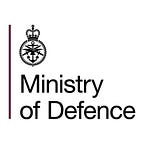How Defence tackled the Salisbury nerve agent attacks
You may be seeing discussions about the Salisbury Novichok poisonings that took place in 2018
When news of the incident broke in March 2018, the Armed Forces stepped up to the task to assist experts at Defra, with support from civilian specialists, to restore safety to Salisbury.
Personnel from the Joint Chemical, Biological, Radiological and Nuclear (CBRN) Task Force worked tirelessly to remove the Novichok nerve agent from contaminated sites in Salisbury and Amesbury.
A specialist military unit bringing together experts from the Army and Royal Air Force, the CBRN’s role is to deal with some of the most dangerous substances known to man.
The Task Force had the role of entering, clearing and decontaminating the public and private properties affected, in support of the police. It was their job to remove the deadly nerve agent, destroy any contaminated objects, make the city safe and let businesses reopen and life get back to normal.
Meanwhile, analytical chemists from the Defence Science and Technology Laboratory (Dstl) worked round the clock to identify the organophosphate nerve agent Novichok that was used to poison the Skripals.
They researched, analysed and carried out testing for over a year, assuming the role of scientific lead in the aftermath of the incident and providing tactical advice to the entire operation. During the year, its chemical weapons experts analysed over 7000 environmental and biomedical samples to correctly identify the agent and carried out decontamination work at 12 sites across the region.
They also tracked the movements of potentially contaminated individuals with the help of traditional policing tools and also identified potentially contaminated vehicles, many of which were ultimately destroyed including eight belonging to the ambulance service and 16 to the police.
Dstl scientists have been deployed directly into government departments, local resilience teams and military headquarters, to provide instant assistance, insights and advice to planners and decision makers.
Using novel technology from industry, they have also been able to dramatically speed up the time it takes to decontaminate an ambulance, from a number of hours to a matter of minutes — helping to support the entire NHS system.
